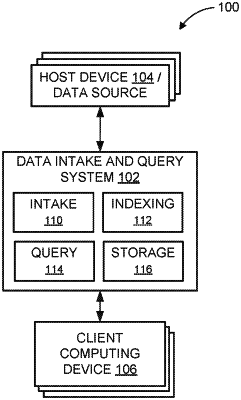| CPC G06F 11/0751 (2013.01) [G06F 11/0781 (2013.01); G06F 16/2365 (2019.01); G06N 20/00 (2019.01); G06F 11/076 (2013.01); G06F 11/079 (2013.01); G06F 11/0793 (2013.01); G06F 11/3058 (2013.01); G06F 11/3447 (2013.01)] | 30 Claims |

|
1. A computerized method comprising:
detecting a data ingestion anomaly through deployment of a first machine learning model taking a data ingestion volume as input, wherein detection of the data ingestion anomaly indicates that the data ingestion volume is an anomalous data ingestion volume;
determining a cause for the data ingestion anomaly by at least:
(i) determining features of the anomalous data ingestion volume,
(ii) training a second machine learning model with historical data sets consistent with the determined features of the anomalous data ingestion volume,
(iii) deploying a second machine learning model taking a data ingestion sub-volume as input, wherein the second machine learning model is configured to predict whether the data ingestion sub-volume is anomalous, wherein the data ingestion sub-volume is a portion of the anomalous data ingestion volume,
(iv) obtaining system state information during ingestion of the anomalous data ingestion sub-volume, and
(v) determining the cause of the anomalous data ingestion volume based on the system state information; and
generating a graphical user interface (GUI) that illustrates a graphical representation of the data ingestion volume over a prescribed time period and a visual representation of an error threshold relative to a predicted data ingestion volume over the prescribed time period, wherein the data ingestion anomaly is displayed as a visually distinct visual element from the graphical representation of the data ingestion volume and is displayed outside of the visual representation of the error threshold, and wherein the GUI displays a remedial recommendation for resolving the cause of the anomalous data ingestion value including an indication to fix or replace a component that is inoperable.
|